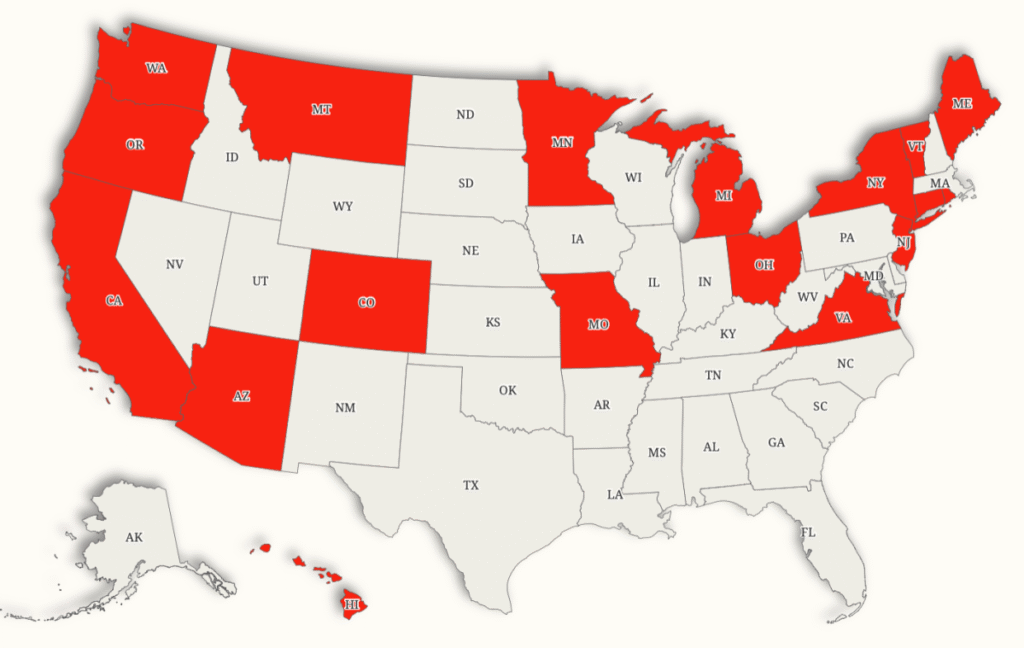A wave of state-level increases will lift minimum wages in many parts of the United States in 2026, affecting workers from coast to coast.
While the federal baseline remains $7.25 per hour under the Fair Labor Standards Act—the same rate since it was last raised in 2009—many states have their own minimum wage rules in place, and will be implementing higher rates that will take effect mostly at the start of the year.
Why It Matters
The 2026 minimum wage increases highlight a growing gap between the stagnant federal rate and the cost of living across much of the United States. With the federal minimum wage remaining unchanged for the last 16 years, many states have acted on their own to address rising housing, food, and healthcare costs. The same $7.25/hour in 2009 would take $11.12 in 2025 to have the same buying power, according to the Bureau of Labor Statistics’ Inflation Calculator.
For millions of low-wage workers, these state-level adjustments mean a modest but tangible boost in take-home pay—often the difference between meeting basic needs and falling short.
What To Know
Newsweek analysis has found 18 states have confirmed a minimum wage increase for the coming year.
Here are all the minimum wage rates for states poised to make increases. All are effective from January 1, unless otherwise stated:
- Arizona will increase its minimum from $14.70 in 2025 to $15.15. 45
- California’s floor moves from $16.50 to $16.90. .4
- Colorado plans a rise from $14.81 to $15.16. .35
- Connecticut’s minimum will go from $16.35 to $16.94. .59
- Hawaii is scheduled to jump from $14.00 to $16.00. 2.0
- Maine will see its rate rise from $14.65 to $15.10. .45
- Michigan’s minimum climbs from $12.48 to $13.73. 1.25
- Minnesota’s rate increases from $11.13 to $11.41. .28
- Missouri will move from $13.75 to $15.00 on. 1.75
- Montana’s rate edges up from $10.55 to $10.85. .30
- New Jersey will go from $14.53 to $15.23. .7
- New York’s minimum increases from $15.50 to $16.50. 1.1
- Ohio’s rate rises from $10.70 to $11.00. .3
- Oregon is listed as raising its minimum, but the 2026 rate is not yet determined, and its start date is July 1, 2026.
- Rhode Island will increase from $15.00 to $16.00. 1
- Vermont’s minimum goes from $14.01 to $14.42. .41
- Virginia will rise from $12.41 to $12.77. .36
- Washington’s minimum increases from $16.66 to $17.13. .47
In the state with the lowest increase, Minnesota, at a $0.28 increase per hour, workers could see an extra $11.20 per week, or an extra $44.80/mo. In the state with the highest increase, Hawaii, at $2 per hour, workers could see an extra $80/week on their paychecks, or an extra $320/mo.
These state moves sit above a federal floor that has not changed since July 2009. Where state and local laws set higher minimums, workers in that state receive the higher rate. A number of states—Alabama, Louisiana, Mississippi, South Carolina and Tennessee—do not maintain their own minimum wage laws, so the federal rate applies by default.
Certain categories of workers can be exempted from minimum wage protections, including salaried executives, administrative and professional employees, independent contractors, some farmworkers, and certain domestic or seasonal workers. Where laws differ, employers must pay the highest applicable rate.
What Happens Next
Efforts to increase the federal minimum wage continue. Earlier this year, Republican Senator Josh Hawley of Missouri and Democratic Senator Peter Welch of Vermont introduced a bipartisan proposal to raise the federal rate to $15 an hour—over twice its current level.
Read the full article here
